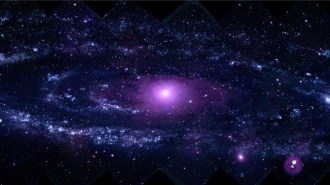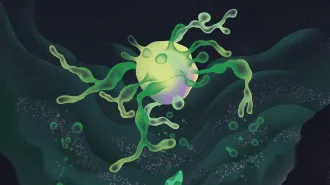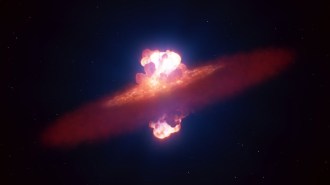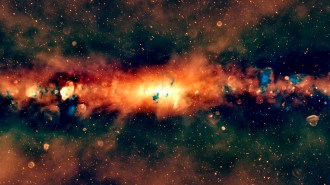Astronomers have found a planet that’s the closest yet known to its parent star. It resides 3.5 million kilometers away from the star, less than one-sixteenth Mercury’s distance from the sun. The planet takes 28 hours and 33 minutes to complete an orbit, beating the previous record holder by a half-hour (SN: 1/18/03, p. 38: Available to subscribers at Distant and Strange: Orb isn’t just another extrasolar planet).

Both close-in planets were revealed by a periodic dip in starlight, suggesting that a small body is regularly passing in front of a star, as seen from Earth. This planet-hunting technique is called the transit method.
Klaus Werner of the Institute for Astronomy and Astrophysics in Tübingen, Germany, and his colleagues homed in on a star whose brightness drops by 2 percent about every 28.5 hours. The researchers then examined the spectra of this sunlike star, known as OGLE-TR-3, and found a wobble in its motion, indicating the tug of the unseen planet.
The transit method, which requires a special alignment among the planet, the star, and Earth, provides enough information to yield the planet’s actual mass, but the wobble method doesn’t. In an upcoming Astronomy & Astrophysics, the team reports that the planet weighs half as much as Jupiter but is only one-fifth as dense. The low density suggests the extrasolar planet has ballooned in response to the heat from its star. Werner notes that a planet can’t get closer to a sunlike star than half the distance the new planet is from OGLE-TR-3. At greater proximity, a planet would be torn apart by the star’s gravity.
****************
If you have a comment on this article that you would like considered for publication in Science News, send it to editors@sciencenews.org. Please include your name and location.







